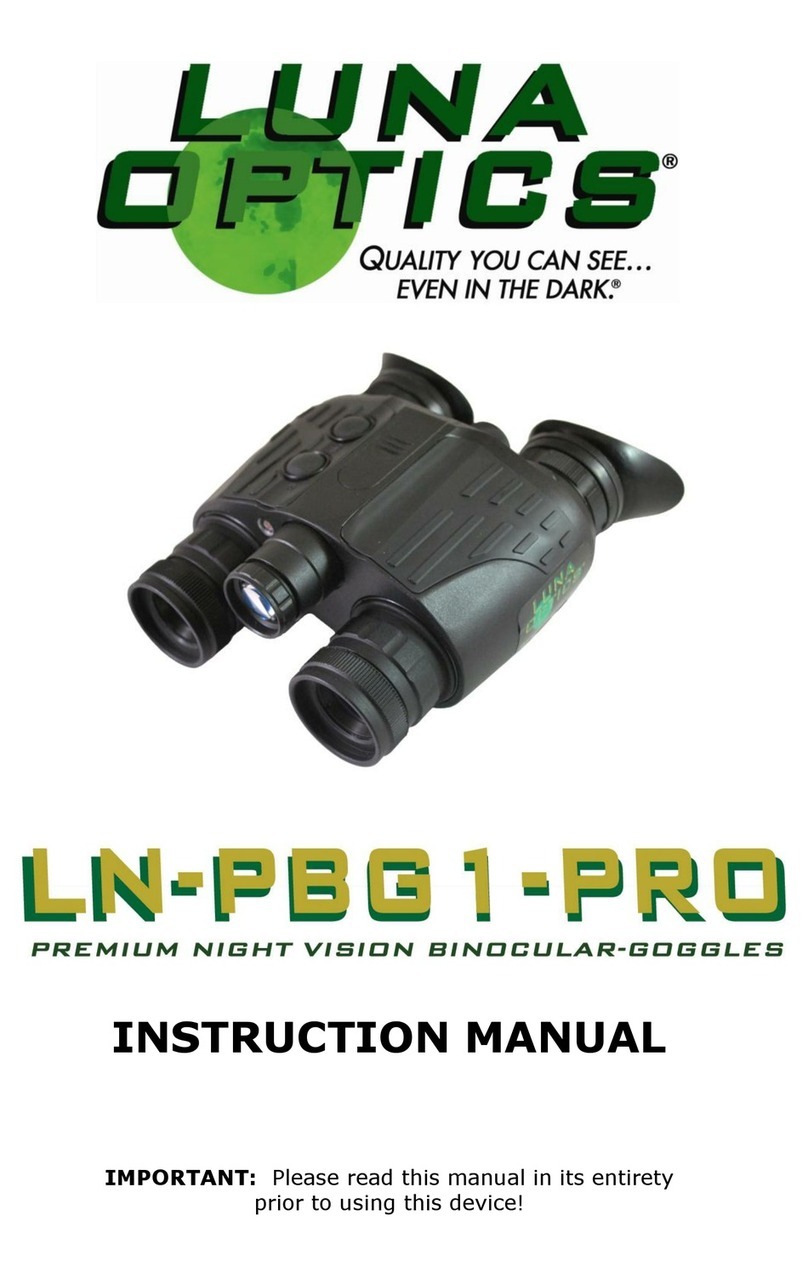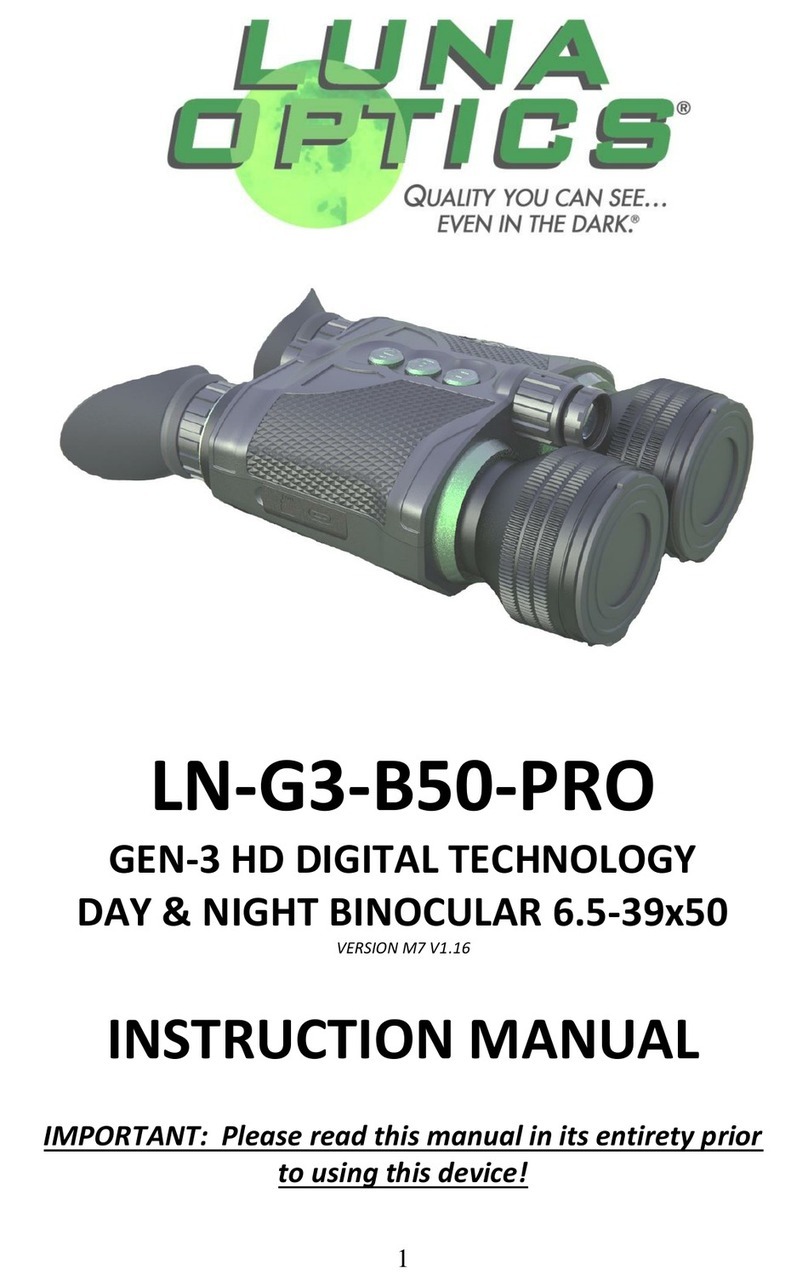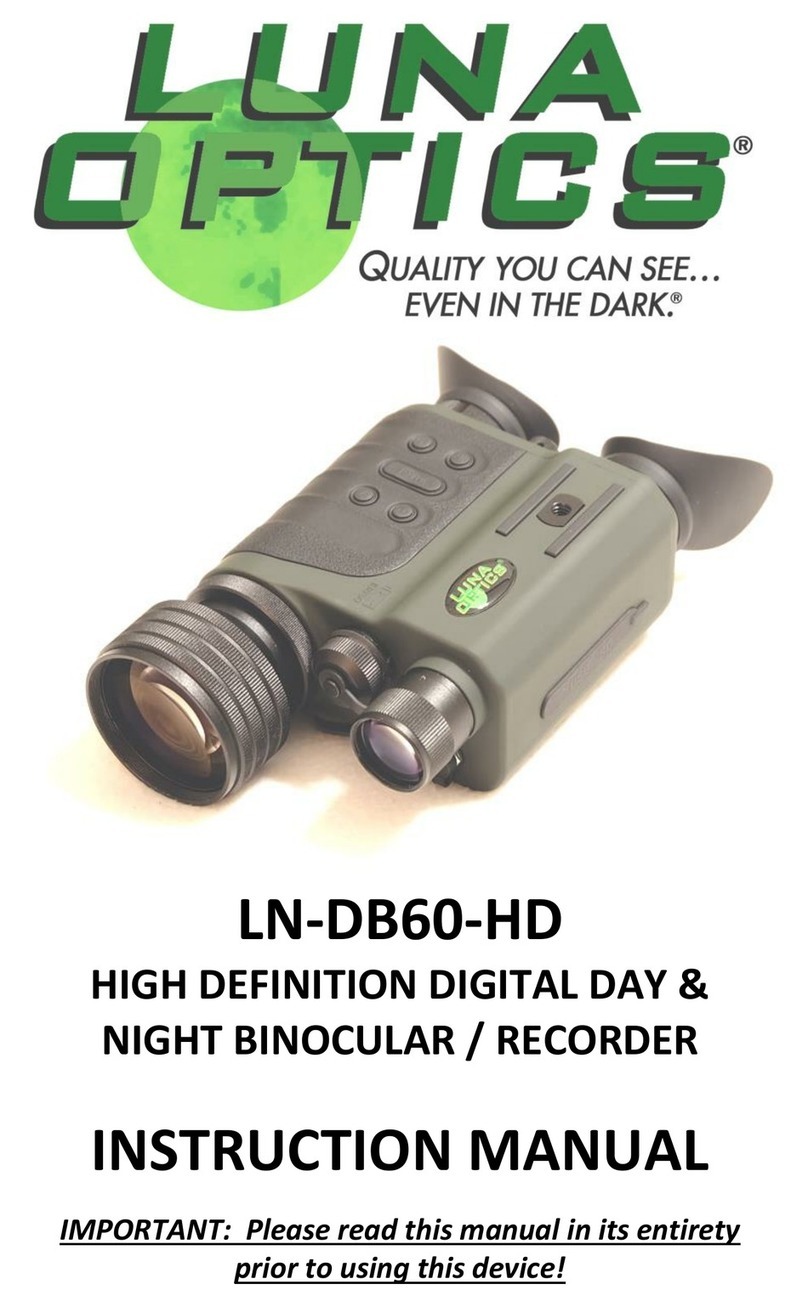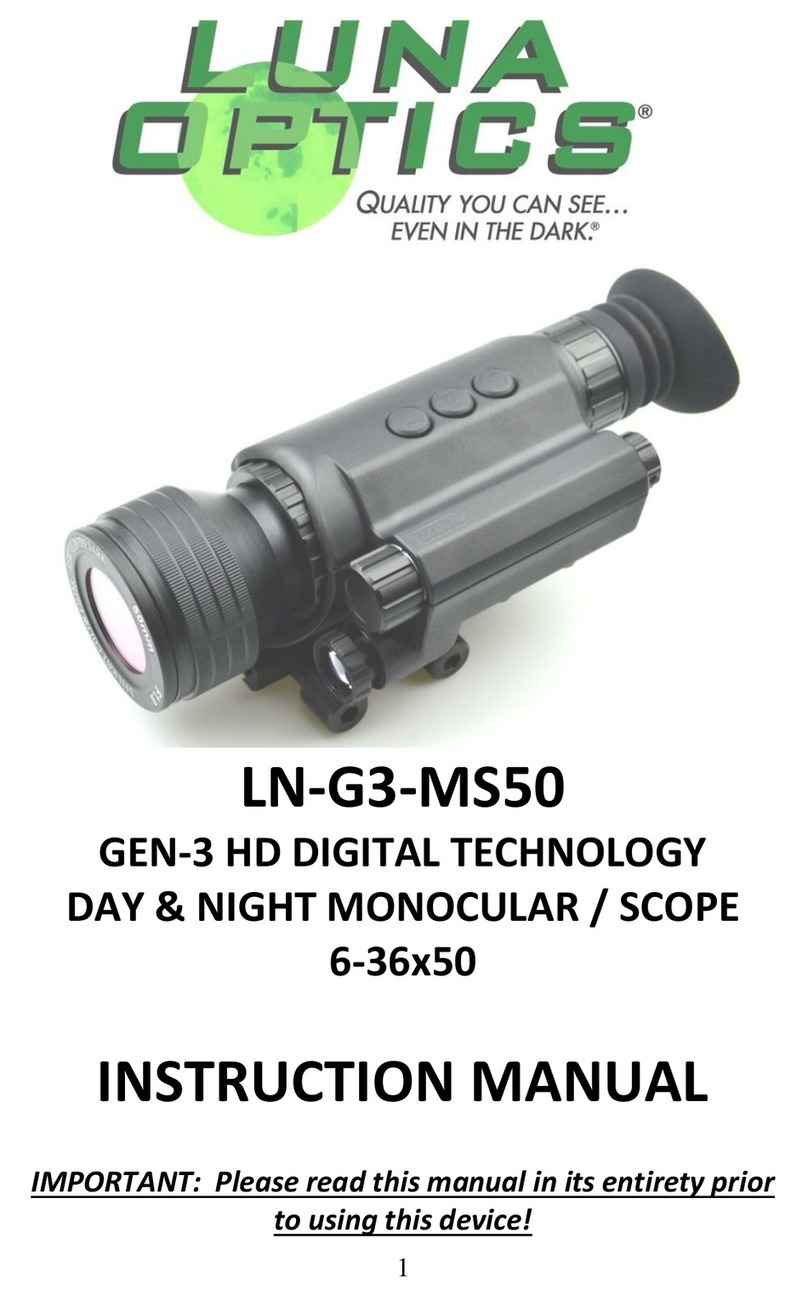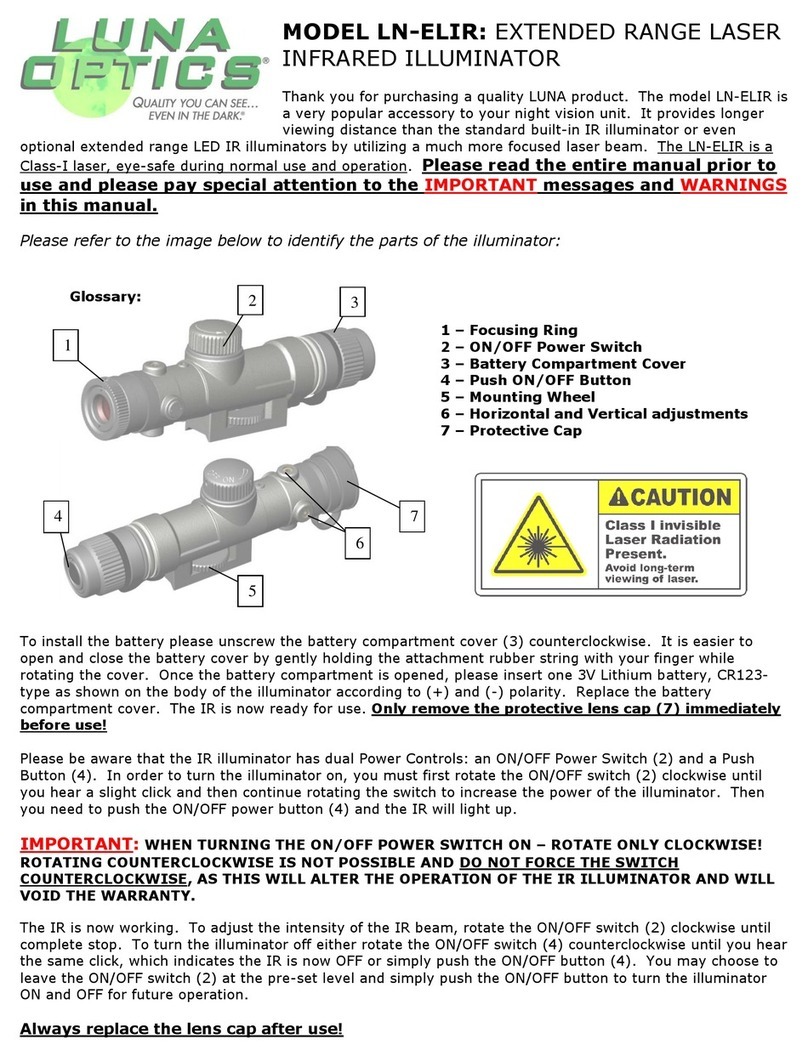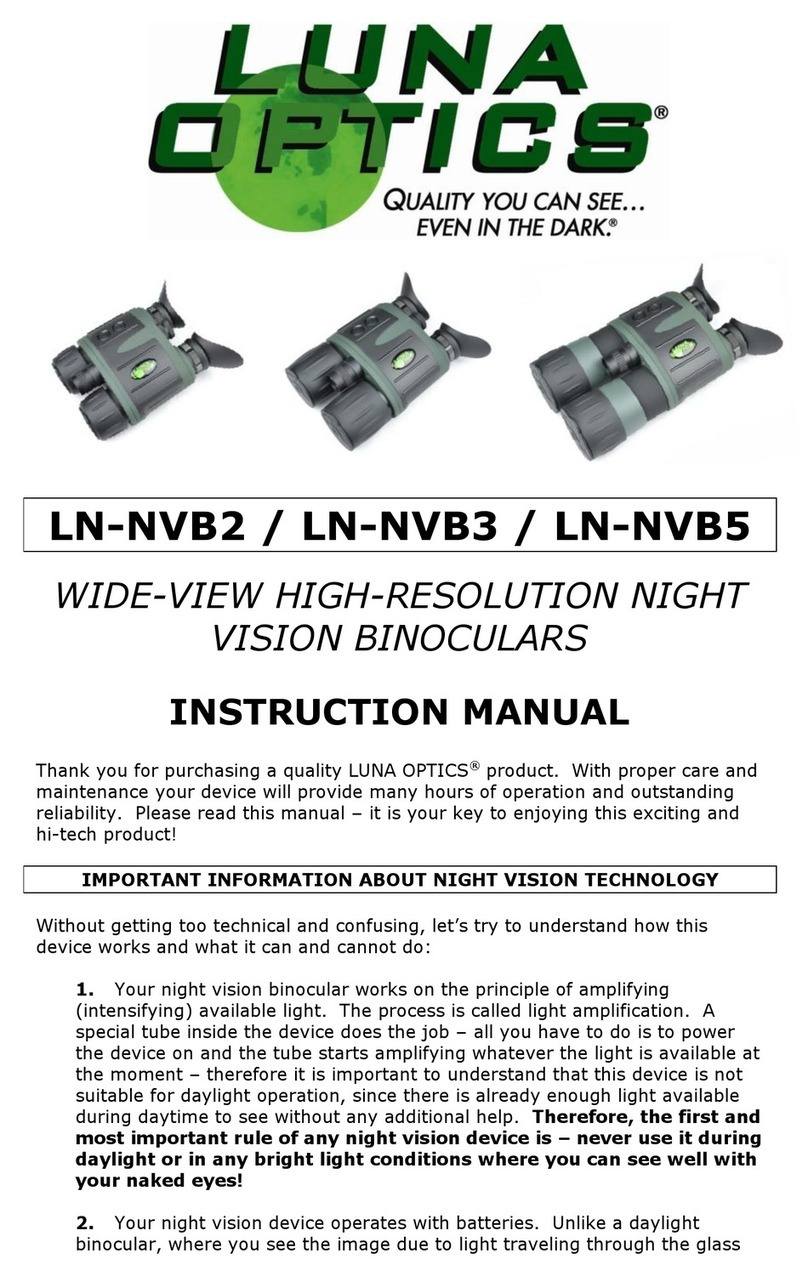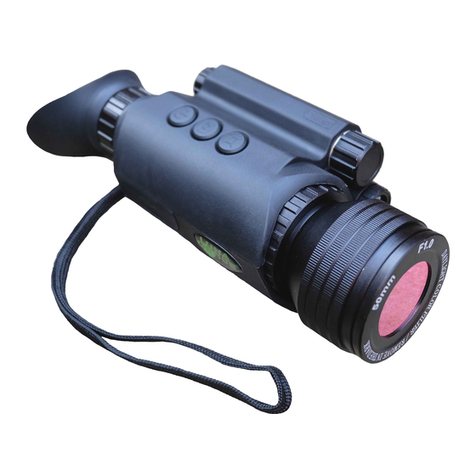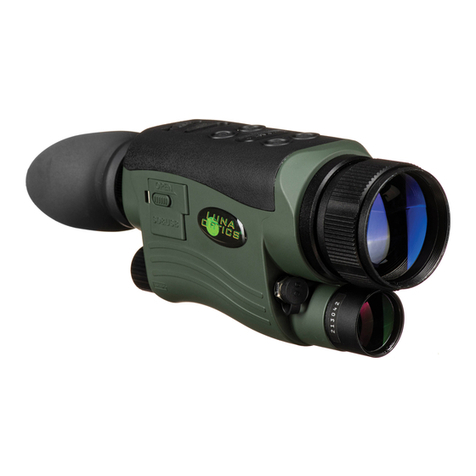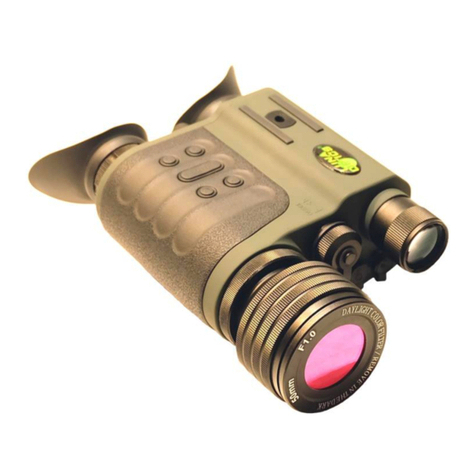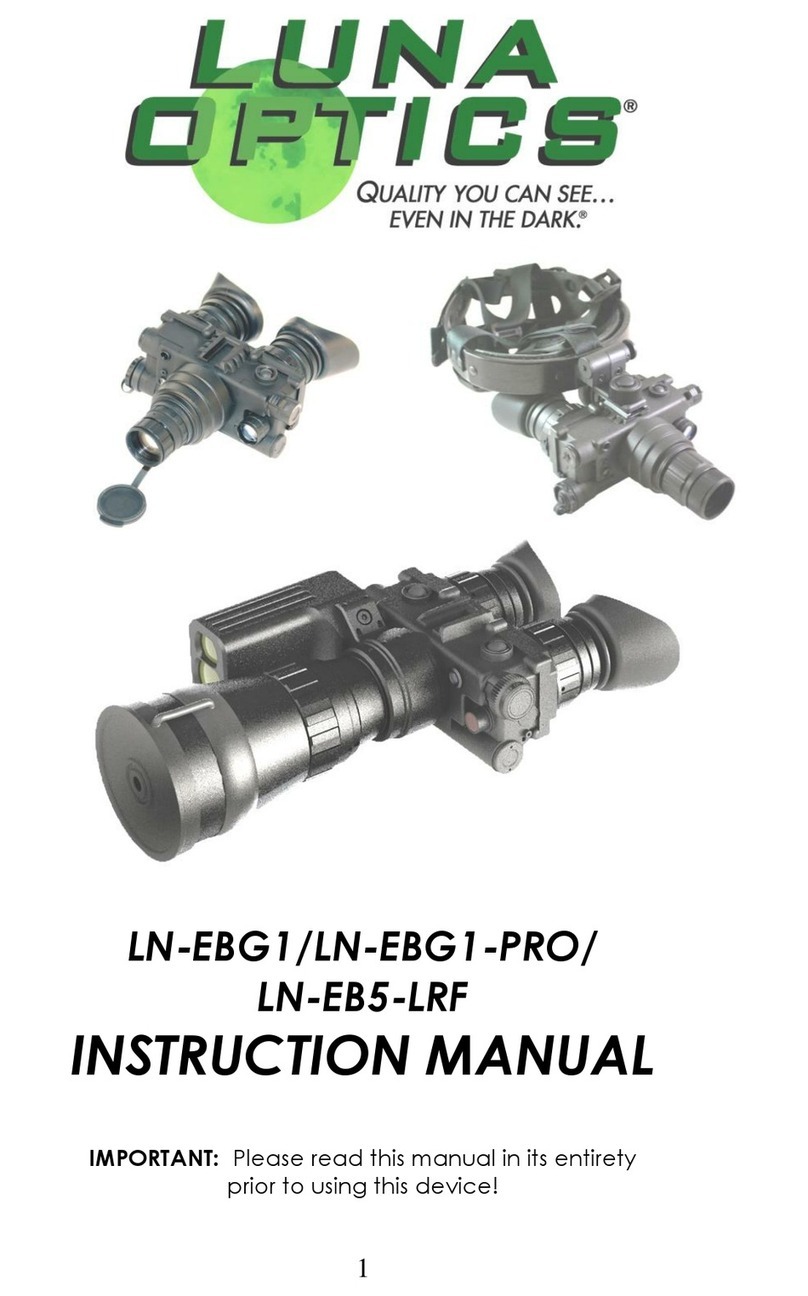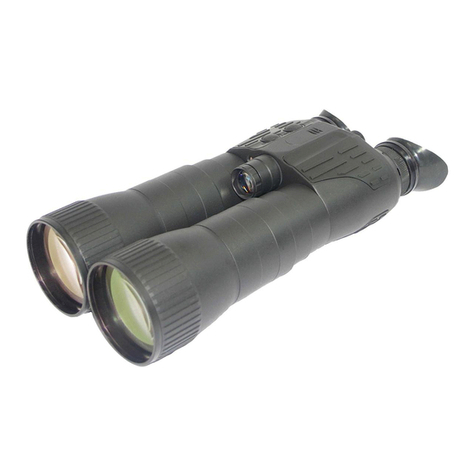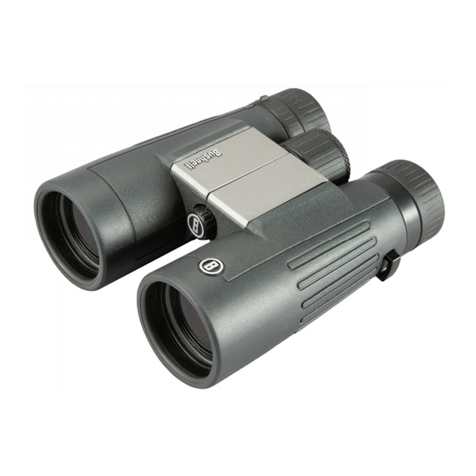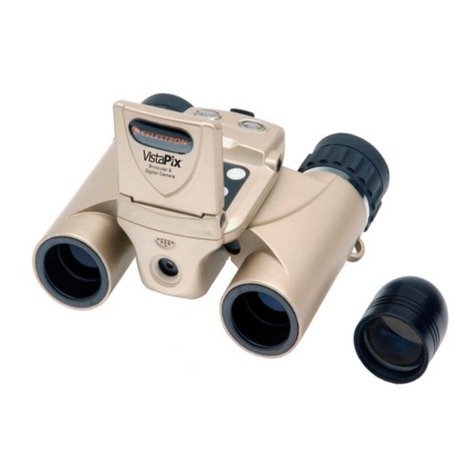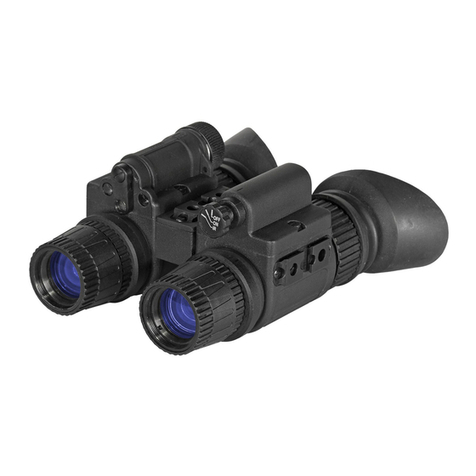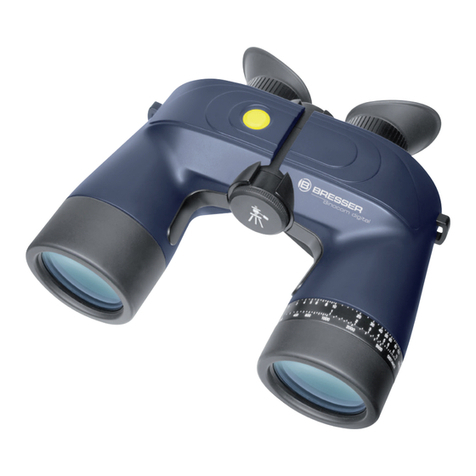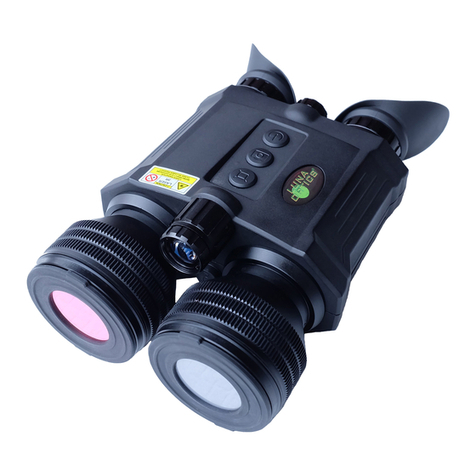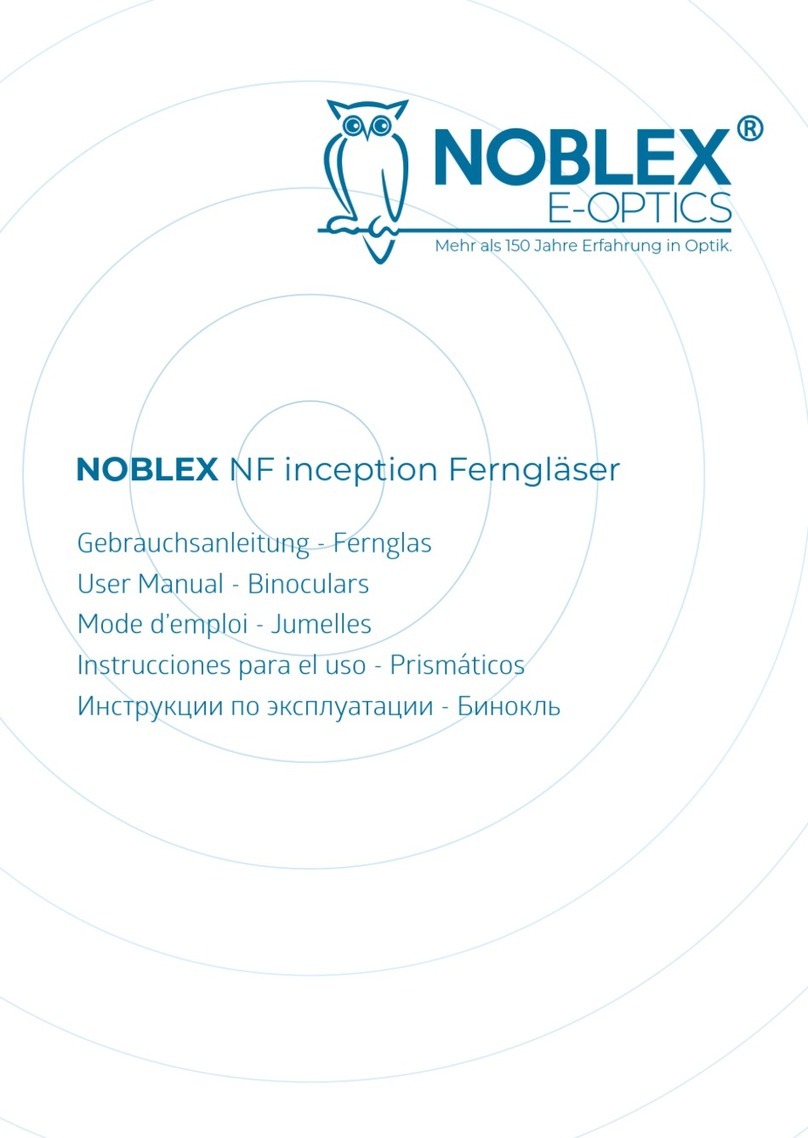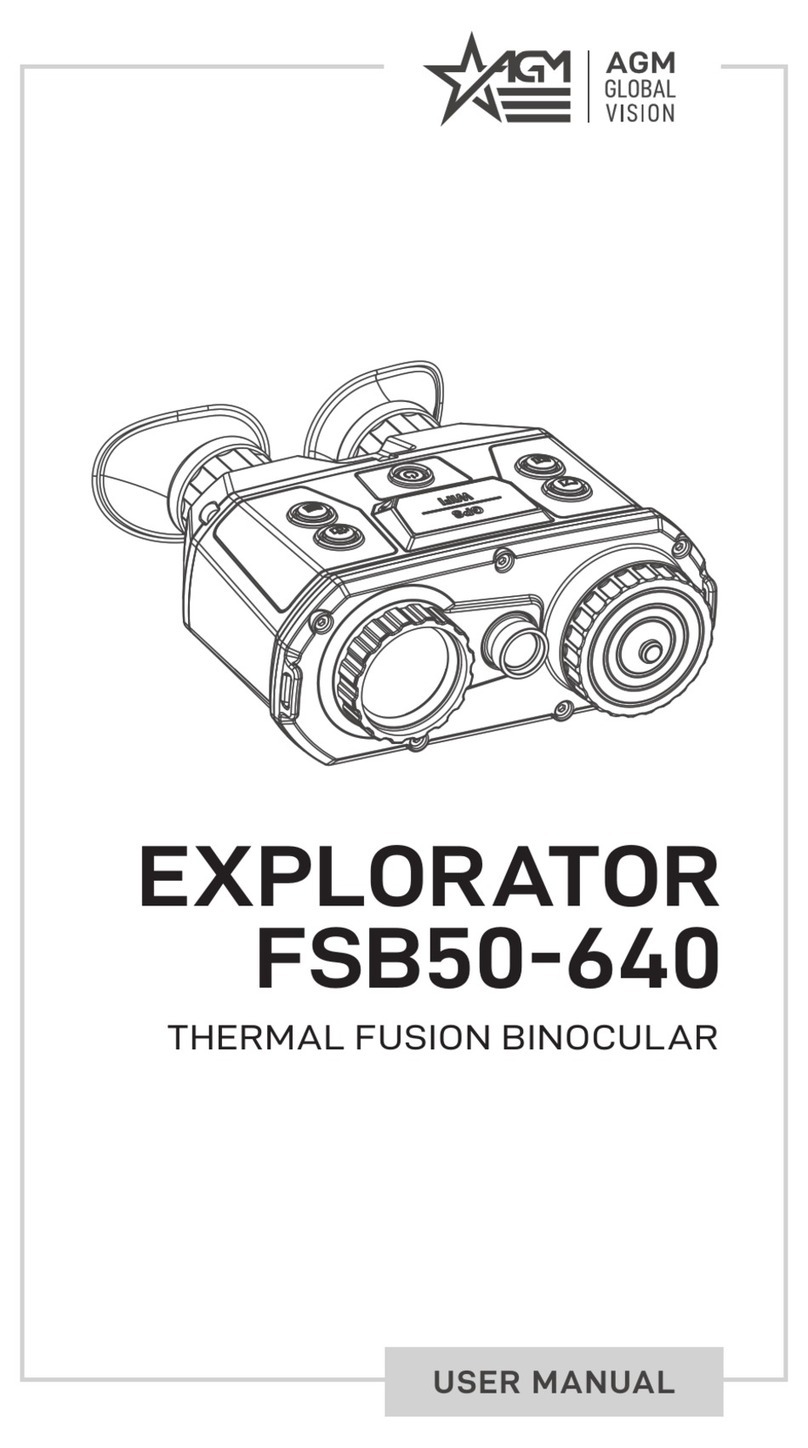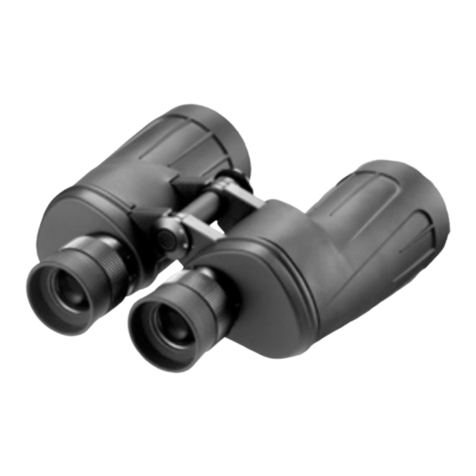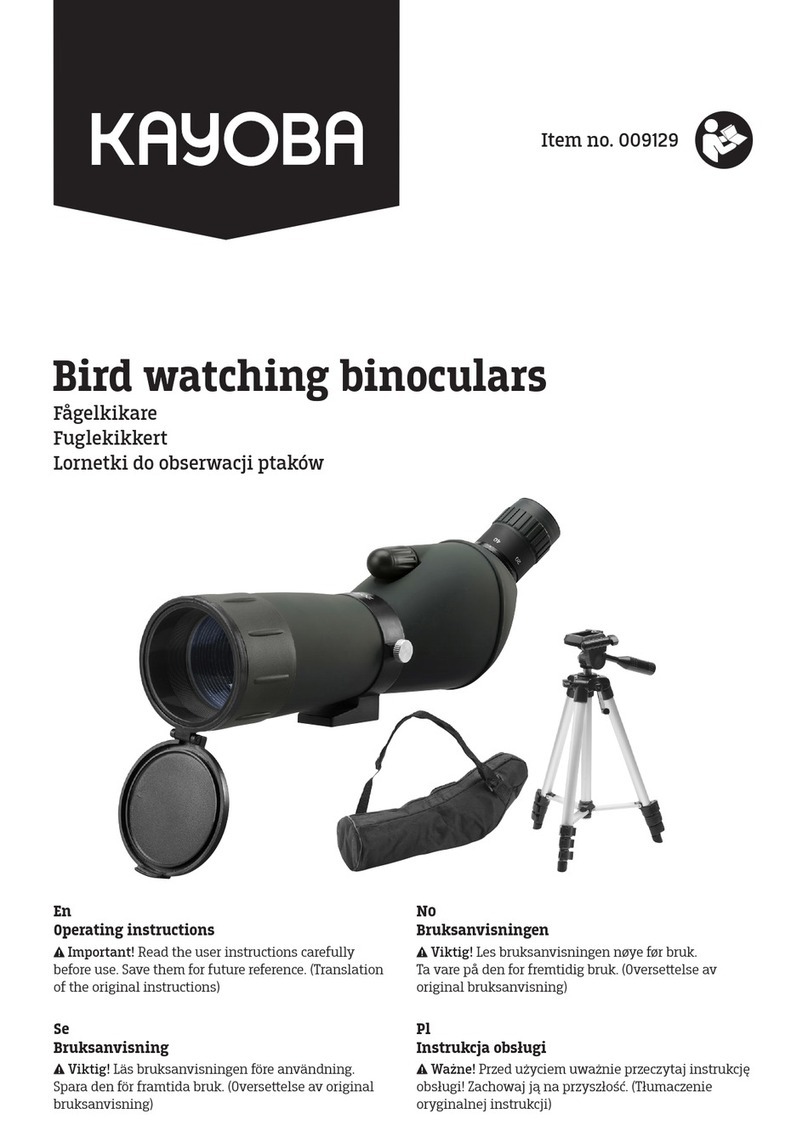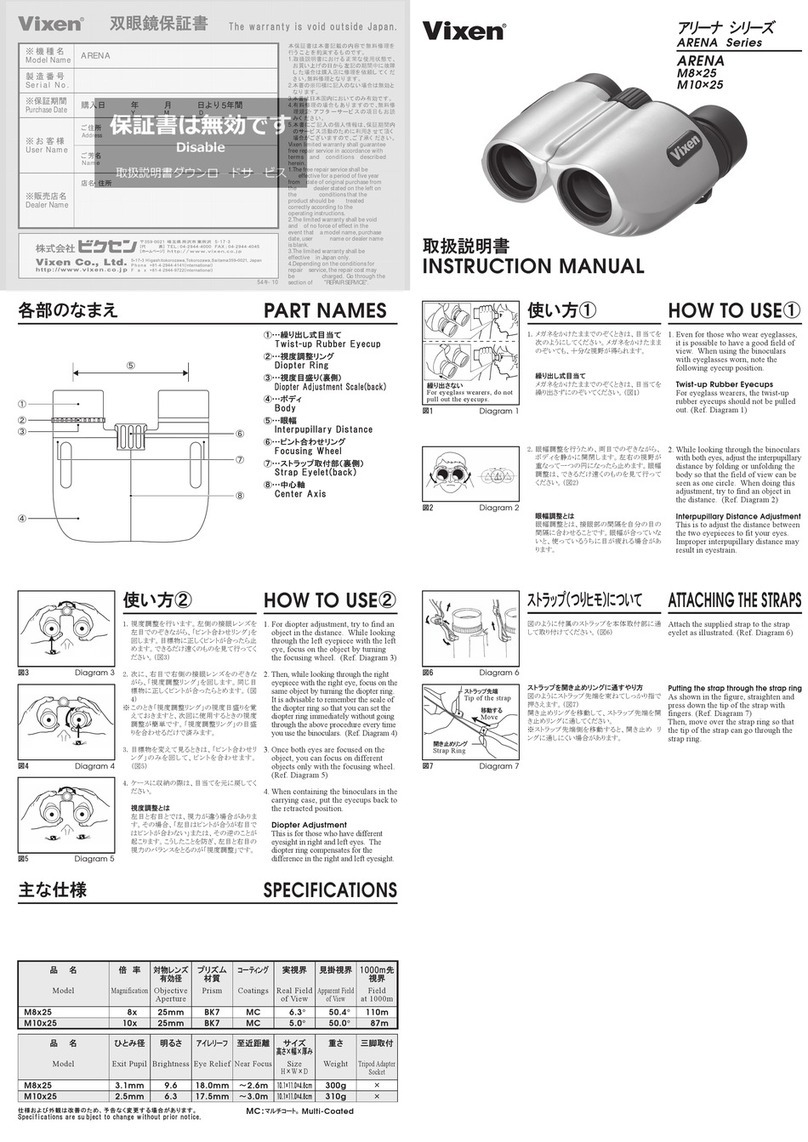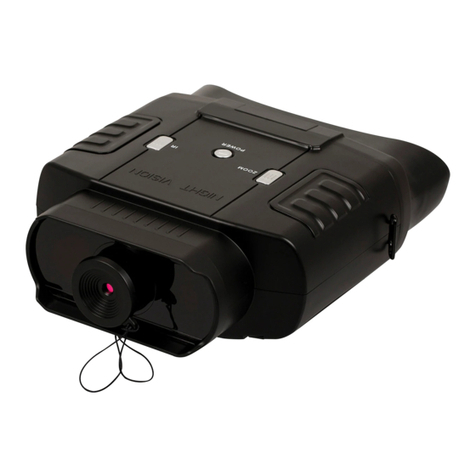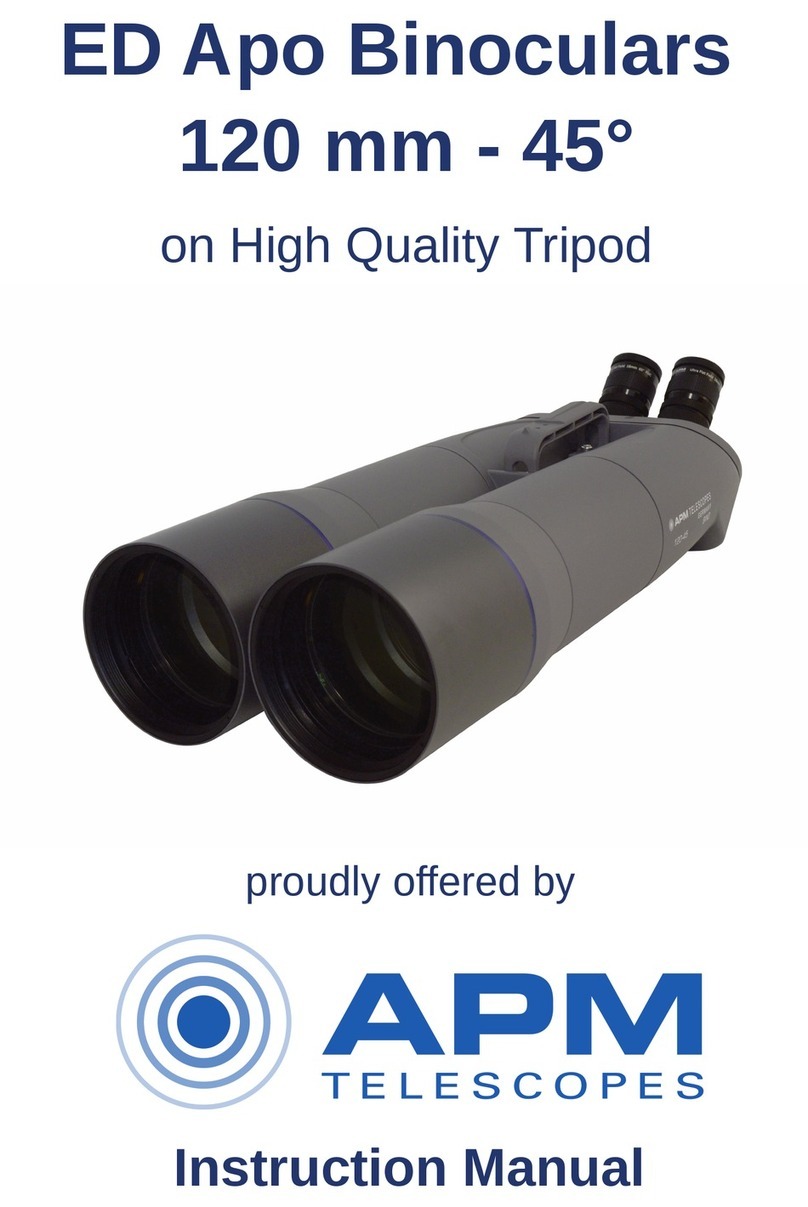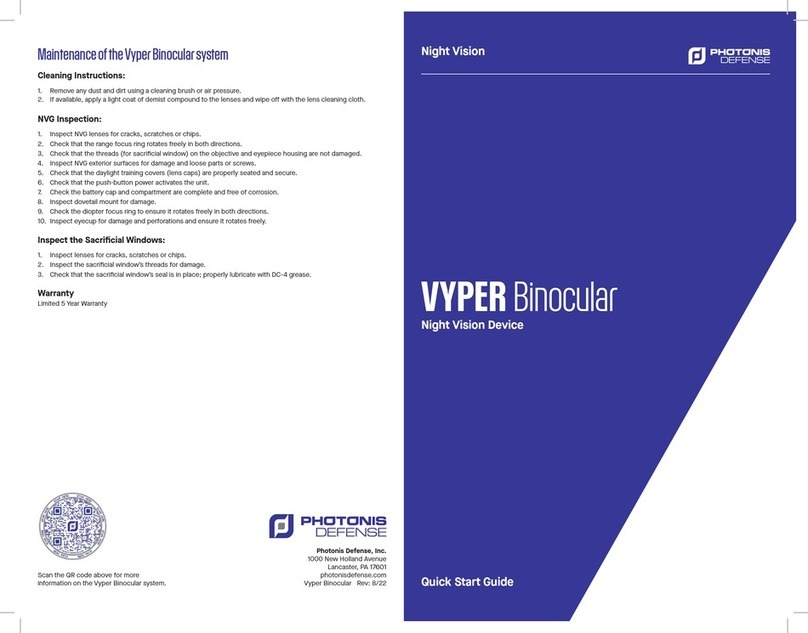To install the batteries, unscrew the battery compartment cover
and install the batteries inserting the positive (+) end first. Once
the batteries are inside, replace the cover.
Your night vision unit has a
power switch (11), which
allows you to easily switch
between OFF / ON & Standby
modes, To turn the unit ON,
first remove the objective lens
cover and rotate the switch by
one dial counterclockwise to
ON position. Look through the oculars –you should see
INITIALIZING appear on the display. The unit will become
operational within approximately 5 seconds after that. To turn
the unit OFF rotate the same switch backwards (clockwise) one
dial to OFF position. You may also have the unit on STANDBY
position by first turning the unit to ON position and then gently
pulling the Power Switch outwards and rotating it one
additional dial counterclockwise. STANDBY mode allows you to
quickly get operational in the field, eliminating the 5 second
delay when turning the switch back to ON position. It is also
used when viewing the image on external video source utilizing
the video output located directly above the battery
compartment cover (Yellow RCA type video plug). It is always
recommended to turn the unit to OFF position if you are not
planning to operate the unit for more than a few minutes in
order to conserve battery power. Always replace the objective
lens cover after the unit is turned off and is no longer is in use.
To obtain the sharp image, you must first rotate each Ocular
Focusing Ring (8) one-by-one in either direction, until you notice
in which position the image is at its best. Since you are looking
at a display, it will be easier to adjust them by simply focusing
your attention on the displayed letters and numbers. After that,
rotate the Distance Focusing Ring (3) also until the image is at
its best. You may have to repeat the process again, until the
